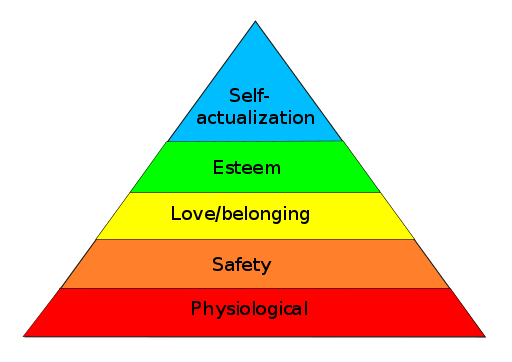
Maslow’s pyramid
In 1943, Abraham Maslow’s psychology paper, “A Theory of Human Motivation,” was published in Psychological Review. His “hierarchy of needs” put basic needs, such as survival, at the base of a pyramid, followed by the more sophisticated human wants, such as love, esteem, and at the pinnacle, self-actualization, or the fulfillment of one’s personhood via implementations of all the talents and abilities which the lower levels engender.
Self-actualization is your final achievement as a professional
Self and physician are mutually entangled at a very quantum level: you are a doctor and a doctor “is you.” Being a doctor is your gestalt. Even when you go on vacation or take a night off, you’re a doctor who is on vacation or who is taking a night off. Plumbers don’t do that. Salesmen or researchers don’t do that. Physicians do. As metaphoric pyramids go, human motivation for physicians probably makes its own geometric shape, a hyperdimensional pyramid with ledges, asides, secret tunnels, and perhaps even some cracks. The higher the pyramid, the more vulnerable is its structure to sabotage from within, sabotage from without, sinking, neglect, and weathering from abuse.
You were indoctrinated into your own private pyramid the first time you were asked, “What do you want to be when you grow up.” This obligation to self, before you even knew about pyramids and psychologists, has been the background radiation that has permeated your being on your course toward self-actualization and self-perception—becoming the person you wanted to be when you grew up, after you’ve grown up. Nature and nurture have smelted your DNA, and if you truly get what being a doctor is all about, the ore that has floated to the top from this smelting process is your self-actualization as a physician, whether it be as an employee, associate, or partner.
Tropology meets topology: what kind of physician do you want to be when you’ve grown up?
When you are a new doctor jumping on board an established practice, it is expected that you subscribe to a way of doing things. Maybe these ways are right or maybe they’re wrong. Can you abide them or can the practice abide your not abiding them? You’ve always dreamed of how you would treat, educate, and relate to patients, and a well-oiled machine (i.e., an established practice) invites no torpedoes. Sometimes you must draw the line right away if you think there are dangers to patients or unethical practices. When your moral compass points south, it takes no time before you walk out the door. Other times you assimilate without difficulty; at some point, however, you will want to be your own person, your own doctor. Will you be a torpedo or an additional gear in the well-oiled machine?
The climb up your pyramid of self-actualization can be smooth, but if someone at the top begins rolling Sisyphean boulders your way, you will be stuck on a lower level, such as survival (the bottom tier of Maslow’s pyramid). If there are things in the practice you cannot abide and you stand your ground, as the new doctor, you learn you have no bluffing power. You have to either accept the treatment, find the door, or face dismissal and even a non-compete clause. This is a tough call. What you do in these defining moments is like choosing which side of the bed you’ll be sleeping on for the rest of your married life. Quick choices can have lifelong consequences.
Self-actualization 101: your Venn, your zen, and your when
It is inevitable that you will be blind-sided with conflicts between your self-actualization and the established order of the established practice. No one teaches it in medical school. There are no self-help books for Dummies. On your first day, professional, personal, ethical, financial, and social aspects of interacting with other doctors becomes very complicated. These circles in the Venn diagram do not overlap dead center on you, but off to the side, as you are forced to add weight to one dimension and lessen the importance of another. The overlap over you—your circle—may not be a circle in which you want to be. Reconciling it isn’t easy (unless you walk out the door). But nothing important is ever easy.
Warning signals
There are warning signals of perils to your self-actualization. They can come before or after committing to employment. Hopefully, they’ll come before so that you have an opportunity to heed them. If they come after you’re committed to a practice, keep in mind that while you’re trying to fit in amiably—even against the odds—you employer or senior partner is experiencing a learning curve him- or herself. You both have much to lose if it doesn’t work out, so your boss, seasoned with more experience (perhaps remembrances of prior missteps with the others before you), will most likely extend a hand across that W-2 aisle. On the other hand, if the practice policy is inflexibility, then you have to accept that you’re easily replaceable. You should cut your losses early before plaque begins to build in your coronary arteries.
Forewarned is forearmed
What are the warning signals? Can you truly prepare for the amorphic ghouls that may haunt your professional future? Part II of this 2-part series specifically explores the pitfalls in your journey to self-actualization as a physician.
